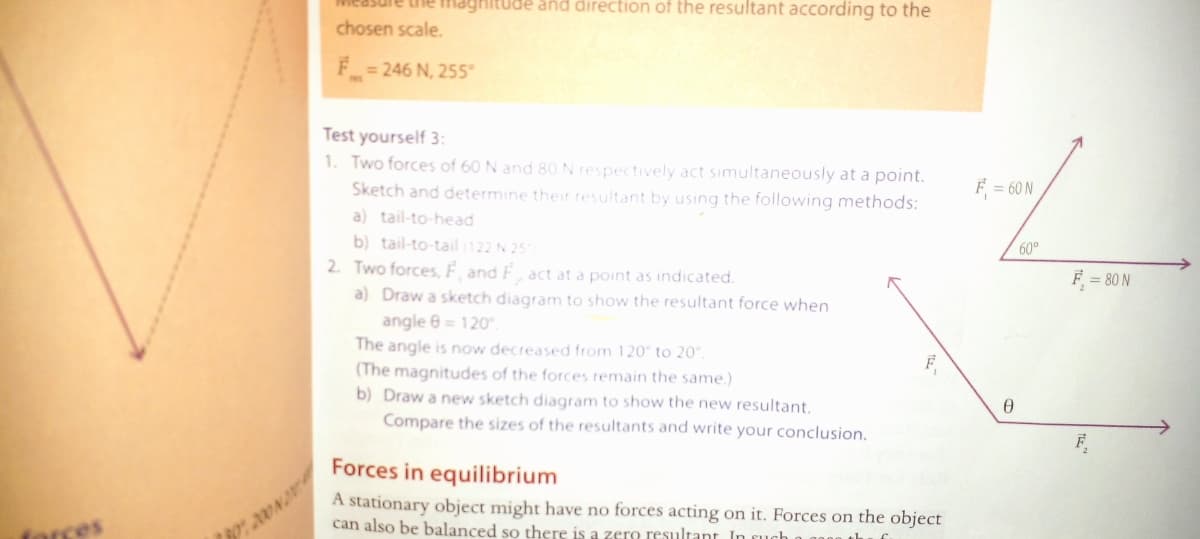Test yourself 3: 1. Two forces of 60 N and 80 N respectively act simultaneously at a point. Sketch and determine their resultant by using the following methods: F = 60 N a) tail-to-head b) tail-to-tail (122N 25 2. Two forces, F, and Fact at a point as indicated. 60° F = 80 N a) Draw a sketch diagram
Test yourself 3: 1. Two forces of 60 N and 80 N respectively act simultaneously at a point. Sketch and determine their resultant by using the following methods: F = 60 N a) tail-to-head b) tail-to-tail (122N 25 2. Two forces, F, and Fact at a point as indicated. 60° F = 80 N a) Draw a sketch diagram
International Edition---engineering Mechanics: Statics, 4th Edition
4th Edition
ISBN:9781305501607
Author:Andrew Pytel And Jaan Kiusalaas
Publisher:Andrew Pytel And Jaan Kiusalaas
Chapter1: Introduction To Statics
Section: Chapter Questions
Problem 1.12P: A differential equation encountered in the vibration of beams is d4ydx4=2D where x = distance...
Related questions
Question

Transcribed Image Text:he maghitude and direction of the resultant according to the
chosen scale.
= 246 N, 255°
Test yourself 3:
1. Two forces of 60 N and 8O N respectively act simultaneously at a point.
F = 60 N
Sketch and determine their resultant by using the following methods:
a) tail-to-head
60°
b) tail-to-tail (122 N 25
2. Two forces, F, and F, act at a point as indicated.
a) Draw a sketch diagram to show the resultant force when
angle 6 = 120.
The angle is now decreased from 120° to 20°.
F = 80 N
F
(The magnitudes of the forces remain the same.)
b) Draw a new sketch diagram to show the new resultant.
Compare the sizes of the resultants and write your conclusion.
Forces in equilibrium
A stationary object might have no forces acting on it. Forces on the object
can also be balanced so there is a zero resultant In
Expert Solution
This question has been solved!
Explore an expertly crafted, step-by-step solution for a thorough understanding of key concepts.
Step by step
Solved in 2 steps with 2 images

Knowledge Booster
Learn more about
Need a deep-dive on the concept behind this application? Look no further. Learn more about this topic, mechanical-engineering and related others by exploring similar questions and additional content below.Recommended textbooks for you

International Edition---engineering Mechanics: St…
Mechanical Engineering
ISBN:
9781305501607
Author:
Andrew Pytel And Jaan Kiusalaas
Publisher:
CENGAGE L

International Edition---engineering Mechanics: St…
Mechanical Engineering
ISBN:
9781305501607
Author:
Andrew Pytel And Jaan Kiusalaas
Publisher:
CENGAGE L